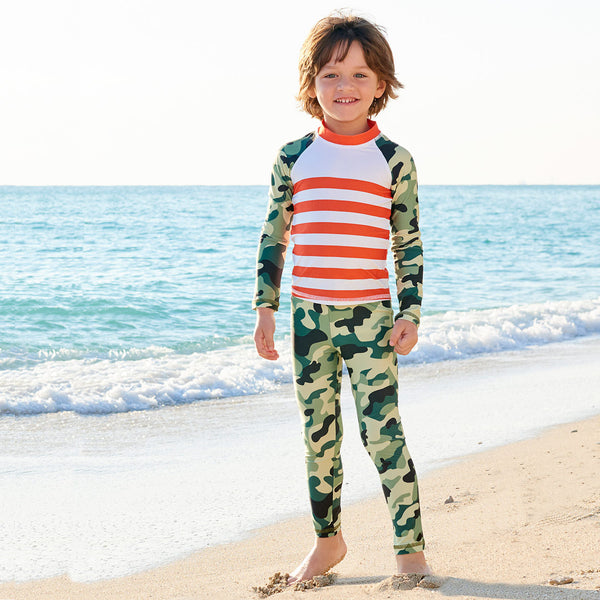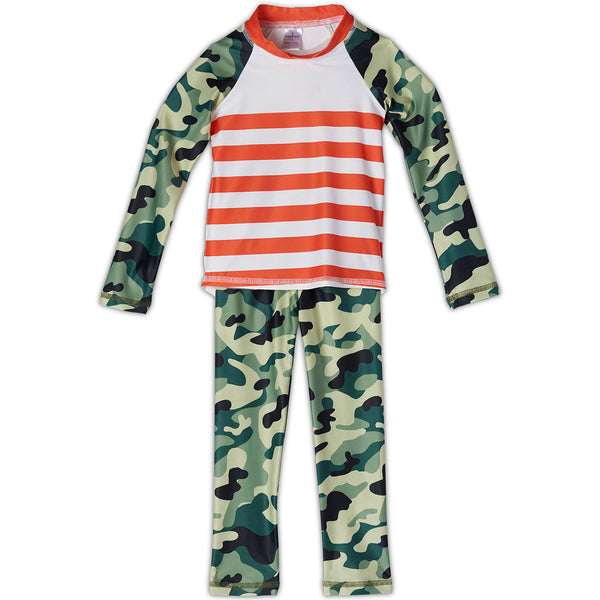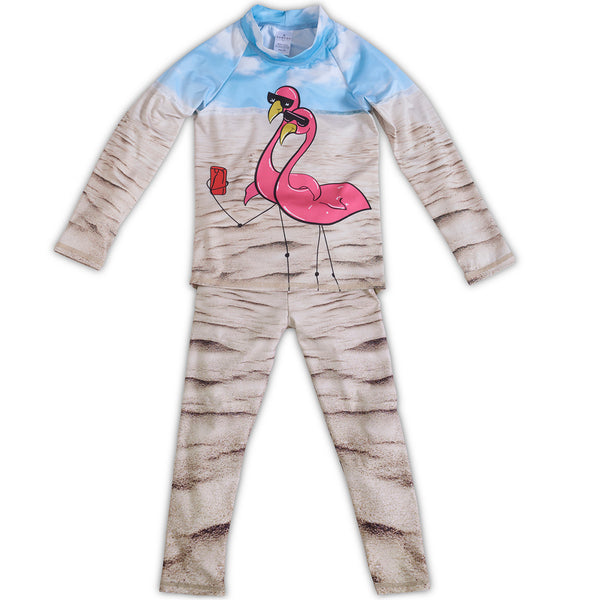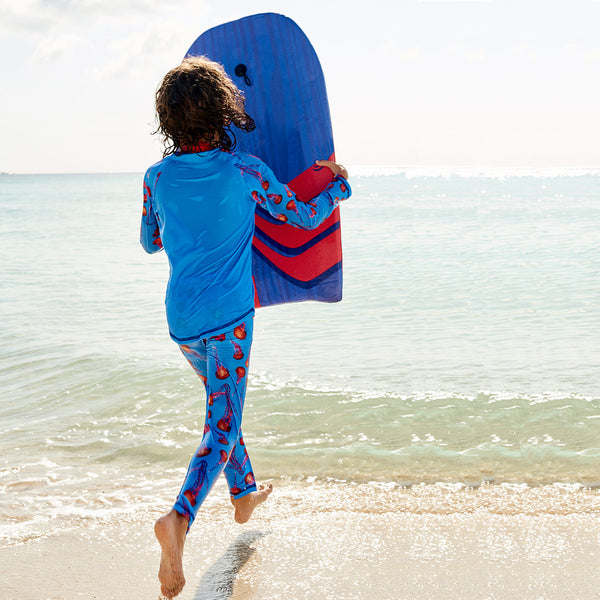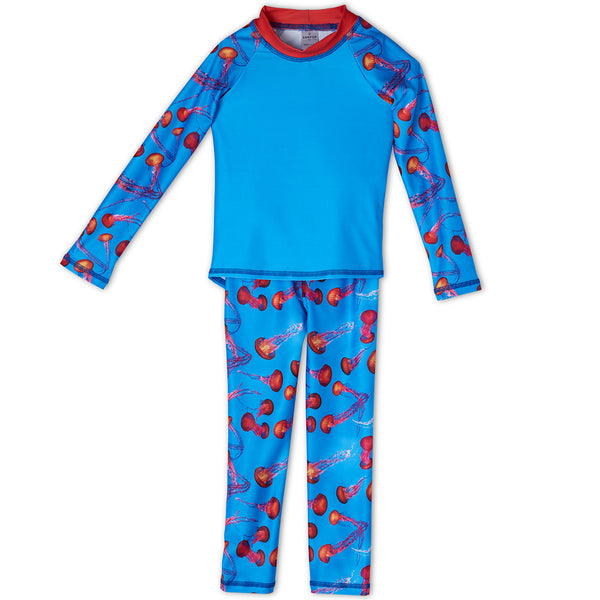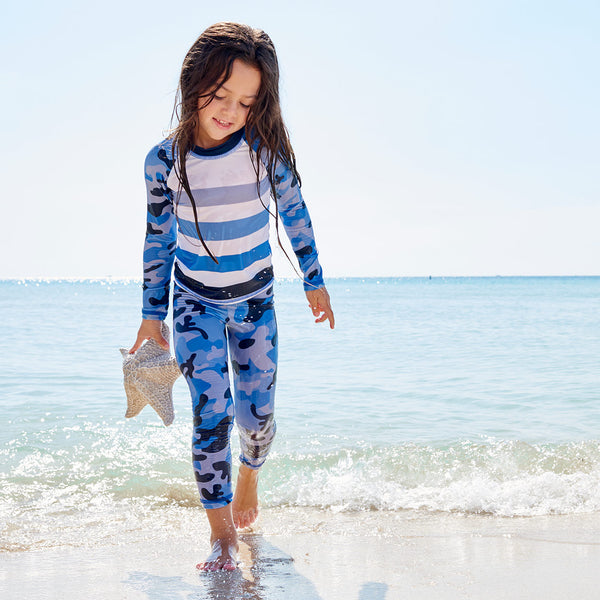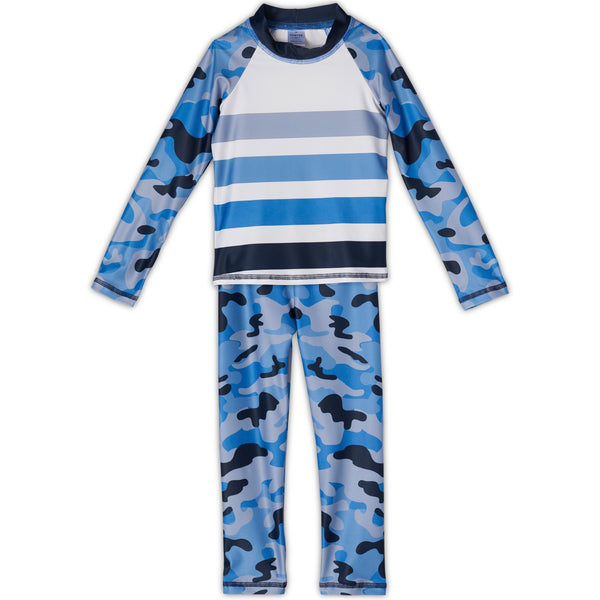Sun Protection Strategy


UPF CLOTHING IS THE BEST SUN PROTECTION OPTION
Protection we get from sunscreen still is far from what it could be. Some readily available sunscreens still allow overexposure to damaging UVA rays, break down in the sun, or contain compounds that may disrupt hormones or cause allergic reactions. The Environmental Working Group (EWG) advises that “Sunscreen should be your last resort” and suggests sun protective clothing, shade and timing as the best defenses. This means that any skin that can be covered with UPF 50+ clothing doesn’t need questionably reliable sunscreens applied, thereby cutting down children's exposure to chemicals on the skin. The only parts that need any sunscreen are any remaining exposed areas such as faces, necks, tops of feet, ears, and hair part-line.
New warnings seem to come out as fast as new formats and formulas for sunscreens. Often what we thought was working turns out to be questionable or falls short of claims. The FDA’s sunscreen rules have grandfathered in sunscreen active ingredients that were on the market as far back as the late 1970’s. For decades, both sunscreen manufacturers and users believed that preventing sunburn from UVB rays would also avoid other damage, such as skin cancer. Today experts realize that both UVA and UVB exposure may contribute to melanoma risk. It wasn’t until 2011 that the FDA enacted the first rules that required “broad spectrum” sunscreens to pass a test to filter UVA.
According to EWG “There is little scientific evidence to suggest that sunscreen alone reduces the risk of cancer, particularly for melanoma, the deadliest type of skin cancer. Despite a growing awareness of the dangers of exposure to the sun’s ultraviolet radiation... melanoma rates have tripled over the past three decades.”
These guidelines can help you, and the kids in your life, to be as safe as possible using sun protective clothing as the best sun blocking foundation.
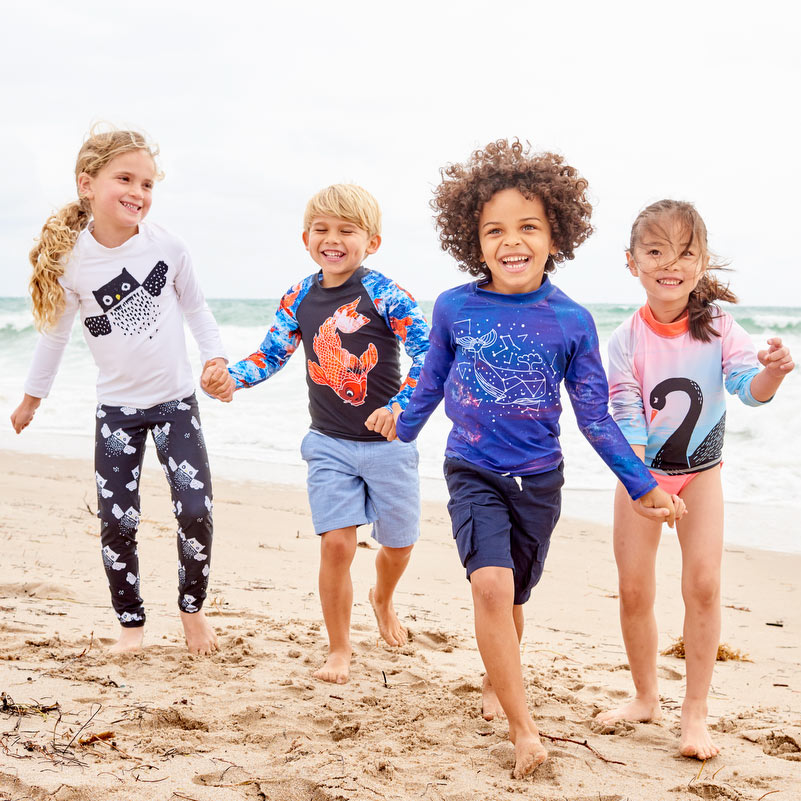
THE BEST SUN PROTECTION IS A COMBINED APPROACH
Wear Highest UPF Rated Clothing
The special fabrics created by Sun Pop Life never use chemicals or treatments, and the protective properties last with easy care. Our products physically block 99.8% of harmful rays from reaching the skin and are lab tested UPF 50+ (the highest sun protection rating available). Don’t forget a hat! Our hats for kids by Swimlids offer UPF 50+ coverage wet or dry - lightweight, well-fitting hats that they want to wear when exposed to the sun. Watch for a new style made for us in July!

Make Plans Around the Sun
Go outdoors in early morning or late afternoon, when the sun is lower. UV radiation is the highest at midday. Use that time to have a picnic, go sight-seeing, or read under an umbrella or tree.
Wear Quality Sunglasses
Make sure they aren’t just the coolest looking pair. Often kids sunglasses are cheaply made and lack protective coatings. Look for stickers claiming protection from UV radiation. Sun Pop Life’s kids sunglasses are stylish and the UV400 Protection lenses are engineered to block 100% of all harmful blue light up to 400 nanometers.

Lastly Put Sunscreen on Exposed Skin that UPF Clothing Doesn’t Cover
Make sure to cover hands, feet, neck, ears, partline of hair, and use a sunblock lip protectant. Follow guidelines to reapply after swimming, sweating, and every 90 minutes.
SUNSCREEN WARNINGS
Avoid Sunscreen with Oxybenzone
Oxybenzone is a synthetic estrogen that penetrates the skin and can disrupt the hormone system. It also is a known allergen. This is particularly concerning for kids.
Avoid Sunscreen with Vitamin A
Eating vegetables high in vitamin A, like carrots, are good for you, but spreading vitamin A on your skin may not be. Government data show that tumors develop sooner on skin covered with creams containing vitamin A. Watch out for retinyl palmitate or retinol which are other names for vitamin A.
Avoid Insect Repellent and Sunscreen Combos
Insect repellent should only be applied when it’s absolutely necessary, which usually is not at the beach. It is best to spray repellent on clothes and not directly to skin. Insect repellent should be bought and applied separately. Combo products encourage applying unnecessary chemical repellent.
Caution about Spray Sunscreen Inhalation
Sprays are so convenient, but they cloud the air with tiny particles that may not be safe to breathe. They usually aren’t applied liberally enough. Make sure to spray in a well ventilated area, and apply two even coats.
WHAT TO USE TO COVER THOSE PRECIOUS FACES, HANDS, AND FEET...
Mineral-Only Sunscreens
Zinc oxide and titanium dioxide are stable in sunlight, offer a good balance between protection from the two types of ultraviolet radiation – UVA and UVB – and don’t often contain potentially harmful additives.
Check out Sun Pop Life’s choice for kids sunscreen from our friends at All Good . Their products are certified organic, oxybenzone free, GMO-free, gluten free, vegan, non-nano, biodegradable, and coral reef friendly. Use on any exposed skin!

Millions of American families only use sunscreen to protect their skin. They are falsely believing they are protected from the harm caused by the sun. UPF 50+ rated clothing is truly the best protection available. The rate of melanoma cases is increasing, and scientists agree that sunscreens alone won’t reverse this trend. Put on some Sun Pop Life and head outside!
SOURCE: Environmental Working Group 2018
